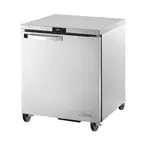
Integrating Functional Foods: Insights for Foodservice Chefs
The modern foodservice landscape is shifting rapidly. Diners are no longer looking for meals that simply taste good—they want meals that make them feel good, too. This growing demand for health-supportive meals is fueling one of the biggest foodservice trends in recent years: the rise of functional foods.
For foodservice chefs working in healthcare, education, senior living, or corporate dining, understanding how to incorporate functional foods into everyday operations is no longer optional—it’s essential. From gut health foods to immune boosting ingredients, these nutrient-dense choices are reshaping healthy menu planning across institutional kitchens.
In this guide, we’ll explore what functional foods are, why they matter, how to incorporate them at scale, and what role commercial kitchen equipment plays in executing this trend efficiently.
What Are Functional Foods?
Functional foods are foods that provide benefits beyond basic nutrition. They contain natural or added compounds that support overall health, reduce the risk of disease, or improve bodily functions like digestion, immunity, or cognitive health.
Examples include:
- Yogurt and kefir (rich in probiotics for gut health)
- Oats, barley, and flaxseed (high in soluble fiber)
- Fatty fish like salmon (packed with omega-3s)
- Leafy greens and berries (antioxidants and vitamins)
- Turmeric, ginger, and garlic (anti-inflammatory properties)
- Fermented foods like kimchi, sauerkraut, and miso
As nutrition trends continue to influence eating habits, these ingredients are gaining ground in foodservice menus, not just in retail or wellness cafés.
Why Functional Foods Matter in Foodservice
Functional foods have been around for centuries, but several forces are accelerating their importance in institutional and commercial kitchens:
1. Health-Conscious Consumers
Post-pandemic, more people are prioritizing meals that support immune health, digestion, heart health, and mental clarity. Even in workplace dining or school cafeterias, there’s a growing appetite for ingredients with wellness benefits.
2. Institutional Goals
Hospitals, universities, and senior living facilities are increasingly focused on preventive care through diet. Offering meals rich in immune boosting foods or gut health foods supports long-term wellness and aligns with population health initiatives.
3. Competitive Differentiation
Foodservice operations that promote healthy food service options tend to attract more engagement and satisfaction, especially among younger, wellness-oriented audiences.
Understanding Key Functional Food Categories
Here’s a closer look at the most in-demand functional food groups and how they benefit your guests:
✅ 1. Gut Health Foods
- Ingredients: Yogurt, kefir, miso, kimchi, sauerkraut, high-fiber vegetables, legumes
- Why it matters: Gut health impacts digestion, immune response, and even mood regulation
- Menu ideas: Yogurt parfaits, kimchi fried rice, miso soup, fiber-rich grain bowls
✅ 2. Immune Boosting Foods
- Ingredients: Citrus fruits, leafy greens, garlic, ginger, turmeric, mushrooms, salmon
- Why it matters: Supports natural defenses, especially during flu season or periods of stress
- Menu ideas: Turmeric lentil soup, garlic-roasted salmon, citrus-dressed kale salad
✅ 3. Heart-Healthy and Anti-Inflammatory Foods
- Ingredients: Berries, nuts, olive oil, fatty fish, oats, beans
- Why it matters: Helps manage cholesterol, inflammation, and blood pressure
- Menu ideas: Oatmeal with flaxseed, salmon grain bowls, berry smoothies, bean stews
These functional categories overlap with many plant-based, low-sodium, and high-fiber menus already in place in modern healthy food service programs.
Healthy Menu Planning at Scale
For foodservice chefs, incorporating functional foods into menus doesn’t mean abandoning your existing system. It means optimizing for health without sacrificing efficiency or flavor.
Tips for Healthy Menu Planning:
- Start with substitutions: Use whole grains instead of refined, swap mayonnaise for yogurt-based dressings, and introduce fermented toppings.
- Feature nutrient-dense add-ons: Add flaxseed, chia, hemp hearts, or turmeric into existing dishes like soups, smoothies, and sauces.
- Offer variety across dayparts: Include functional ingredients in breakfast bars, salad stations, grab-and-go options, and entrees.
- Collaborate with dietitians: Ensure recipes align with nutritional standards and dietary needs, especially in healthcare or senior care.
By making small changes to familiar items, you make healthy menu planning accessible for both staff and guests.
How Functional Foods Fit Different Foodservice Segments
🏫 In Schools & Universities
- Support academic performance and energy levels
- Offer brain-boosting ingredients like whole grains, eggs, and greens
- Great opportunity for smoothie bars, probiotic drinks, and plant-forward meals
🏢 Corporate Dining
- Meet wellness goals for employees
- Focus on gut health, stress reduction, and immunity
- Include labeling for “energizing,” “focus-friendly,” or “anti-inflammatory”
🧓 Senior Living & Healthcare
- Align with low-sodium, heart-healthy, or diabetic diets
- Focus on bone health (calcium, vitamin D), fiber, and cognition
- Serve nutrient-dense, easy-to-digest meals with bold flavor
Commercial Kitchen Equipment That Supports Functional Cooking
Making functional meals consistently and efficiently—especially in high-volume settings—requires smart investment in commercial kitchen equipment. Here’s what makes the biggest difference:
🔧 Must-Have Equipment for Healthy Food Service:
- Steamers: Preserve nutrients in vegetables and grains while reducing the need for added fats
- Combi ovens: Provide precise cooking for multiple items, ideal for batch-cooking functional meals
- Tilt skillets: Great for soups, stews, and grain bowls that include anti-inflammatory or high-fiber ingredients
- Blenders & immersion blenders: Necessary for smoothies, sauces, and purees with gut-friendly ingredients
- Cold prep stations: Keep yogurt, berries, greens, fermented items, and toppings cold and accessible during service
Using the right tools not only improves product quality but also helps kitchen teams execute complex, nutrient-focused recipes at scale.
Labeling & Marketing Functional Foods
It’s not enough to include functional ingredients—you should also tell your guests why they’re there. A few strategies include:
- Use icons or keywords like “gut-friendly,” “energy-boosting,” or “immune support” on menus
- Create a visual key or color-coded system for functional benefits
- Highlight one or two rotating functional ingredients weekly or monthly
- Educate staff so they can explain the nutritional benefits when asked
The goal is to make functional food approachable—not overwhelming.
Final Thoughts
The rise of functional foods is one of the most impactful nutrition trends shaping institutional dining today. From boosting immunity and improving digestion to supporting long-term wellness, these ingredients help foodservice chefs align with modern expectations around health, performance, and sustainability.
With thoughtful healthy menu planning, the right commercial kitchen equipment, and a strategy focused on flavor and flexibility, foodservice operations can lead the way in transforming how people eat and feel—one meal at a time.
Functional food isn’t just a trend—it’s the future of healthy food service.





